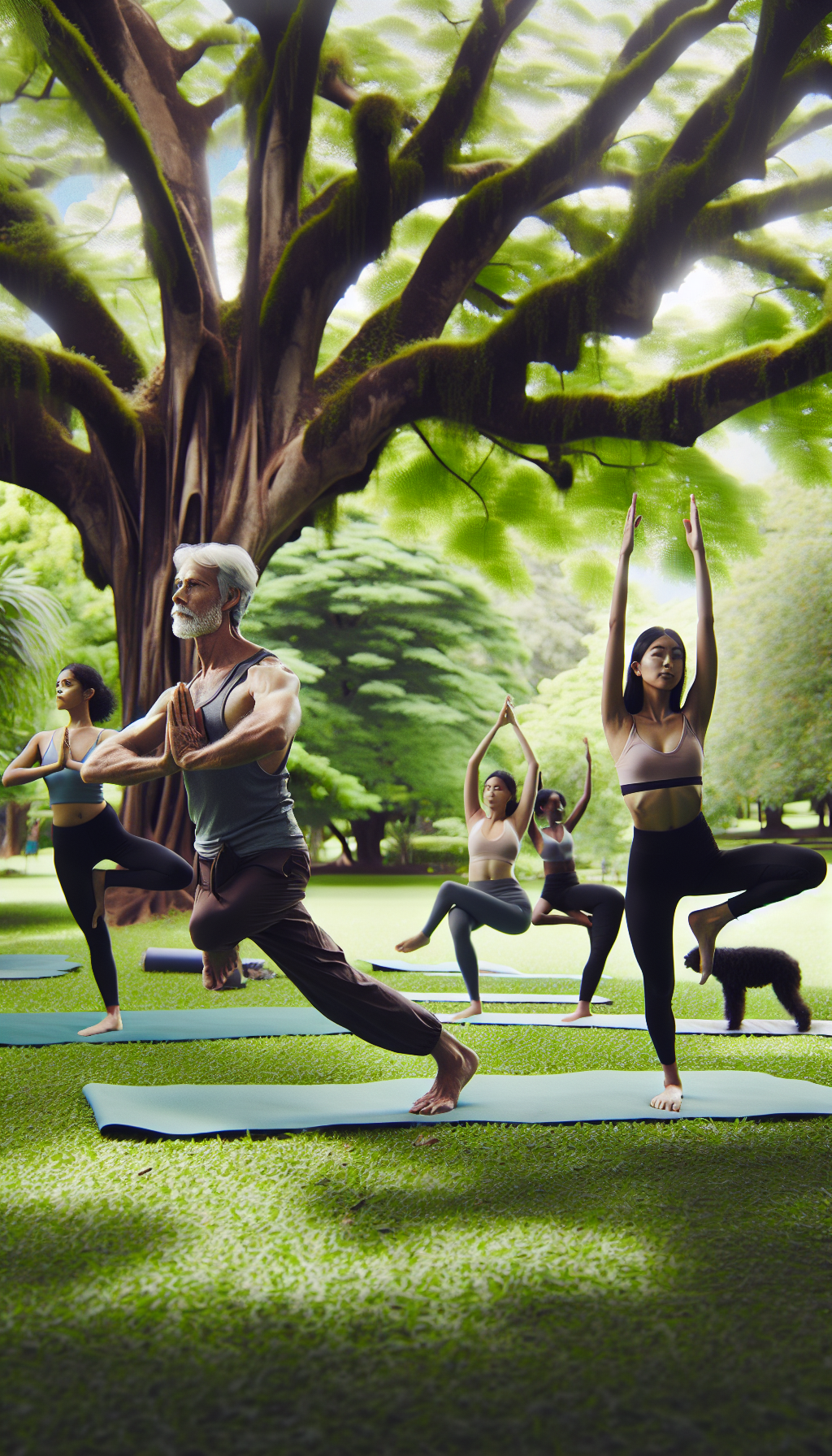Engaging in physical activity is a critical aspect of maintaining overall health and well-being. However, the environment in which one chooses to exercise can significantly influence their level of physical activity. Outdoor environments, in particular, have been shown to offer numerous benefits that can enhance the exercise experience and encourage a more active lifestyle. In this article, we delve into the impact of outdoor environments on physical activity and discuss strategies to maximize these benefits.
The Influence of Nature on Exercise
It’s no secret that nature has a profound impact on our physical and mental health. Outdoor environments provide a unique setting that is conducive to physical activity, offering fresh air, natural light, and the beauty of the natural world, which can be motivational factors for many individuals.
The Role of Green Spaces
Green spaces, such as parks and trails, are not just visually appealing; they are also designed to promote physical activity. These areas often include walking paths, bike trails, and sports facilities, making it easier for people to find and engage in exercise activities that they enjoy. Moreover, the presence of trees and vegetation in these spaces can improve air quality, which is beneficial for those engaging in cardiovascular activities such as running or cycling.
Enhancing Physical and Mental Well-being
The outdoor environment can also play a role in enhancing both physical and mental well-being. Exposure to sunlight during outdoor exercise increases vitamin D production, which is crucial for bone health, and can help regulate circadian rhythms, leading to better sleep patterns. Additionally, natural settings have been shown to reduce stress levels, promoting a sense of tranquility and mental clarity that can enhance the overall exercise experience.
Overcoming Psychological Barriers
A significant factor that affects physical activity levels is the presence of psychological barriers. Outdoor environments can help individuals overcome these barriers by providing a more enjoyable and less intimidating setting for exercise. The variety and the aesthetic appeal of natural landscapes can shift the focus from the exertion of exercise to the enjoyment of the activity itself, which can be particularly beneficial for those who may feel self-conscious or unmotivated in a traditional gym setting.
Understanding the Psychological Barriers to Exercise can provide additional insights into how the outdoor setting can break down these mental obstacles and encourage a more active lifestyle.
Community and Group Workouts
Outdoor environments often serve as a gathering place for community members, which can foster social interactions and create opportunities for group workouts. Participating in group exercises, such as outdoor fitness classes or community runs, can provide a sense of camaraderie and accountability that may be lacking when working out alone.
The Value of Group Workouts in Building Community further explores how these social dynamics can contribute to increased motivation and adherence to a fitness routine.
Incorporating Variety in Workouts
The diversity of outdoor environments allows for a broad range of physical activities that can cater to different interests and fitness levels. From hiking and mountain biking to water sports and outdoor yoga, the options are virtually limitless. This variety can prevent workout routines from becoming monotonous and can help individuals work different muscle groups, improving overall fitness.
For those interested in tailoring their fitness equipment to support a variety of exercises, Selecting Fitness Equipment for Home Gyms offers guidance on creating a versatile and effective workout space at home.
Accessibility and Cost-Effectiveness
Another significant benefit of outdoor environments is that they are often freely accessible to the public. This eliminates the financial barrier associated with gym memberships or fitness classes, making physical activity more inclusive and attainable for individuals from all socioeconomic backgrounds.
Seasonal Considerations
While outdoor environments provide numerous advantages for physical activity, it is important to consider the impact of seasonal changes. Adverse weather conditions can pose challenges, but with proper planning and attire, it is possible to maintain an outdoor exercise routine year-round. For those living in areas with harsh winters or extremely hot summers, adjusting the type and timing of outdoor activities can help to continue reaping the benefits of outdoor exercise.
Seasonal strategies for maintaining an active lifestyle outdoors can be found in the article on Seasonal Outdoor Exercises for Year-Round Fitness.
External Resources for Further Exploration
To enhance the understanding of the impact of outdoor environments on physical activity, here are some niche and specific resources:
- The American Trails website offers extensive resources on the development and use of trail systems that encourage outdoor activity.
- The Children & Nature Network provides research and resources on the benefits of nature for children’s health and development, which can also apply to adults.
- The National Recreation and Park Association has numerous reports and articles on the role of parks and recreation in promoting physical activity.
- Project for Public Spaces focuses on creating and sustaining public places that build communities, including spaces that encourage physical activity.
- The Active Living Research organization conducts and disseminates research on the correlation between community design and physical activity.
In conclusion, outdoor environments have a profound impact on encouraging physical activity and enhancing the overall exercise experience. By taking advantage of natural settings, individuals can improve their physical and mental well-being, overcome psychological barriers to exercise, engage in social workouts, and enjoy a variety of activities that contribute to a healthier lifestyle.



